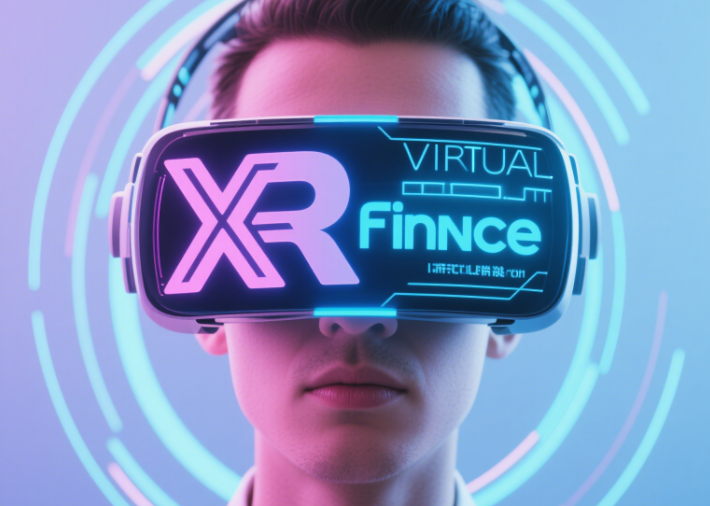In an era where digital transformation is reshaping industries, Virtual XR Finance is emerging as a game-changer for the financial sector. By merging Extended Reality (XR)—encompassing Virtual Reality (VR), Augmented Reality (AR), and Mixed Reality (MR)—with financial services, this innovation is redefining how we trade, invest, and interact with markets. From immersive data visualization to virtual trading floors, XR is bridging the gap between the physical and digital worlds, offering unprecedented opportunities for growth and efficiency.
The Rise of XR in Finance
XR technology is no longer confined to gaming or entertainment. Financial institutions are leveraging its capabilities to enhance customer experiences, streamline operations, and drive innovation. For instance, VIVE Business provides solutions for financial training, allowing employees to simulate real-world scenarios in a virtual environment . Similarly, Fidelity Investments uses VR to educate clients about market trends through interactive holographic displays, while GTE Financial offers virtual branches where users can explore financial products in 3D .
The global XR market is projected to grow at a 64.5% CAGR between 2024 and 2029, reaching $1.84 trillion by 2029 . In finance, this growth is driven by the demand for immersive data analytics, remote collaboration, and personalized customer engagement.
Key Applications of Virtual XR Finance
1. Immersive Data Visualization
XR transforms complex financial data into interactive 3D models, enabling traders to visualize market trends, portfolio performance, and risk factors in real time. For example, banks like BNP Paribas use AR to overlay transaction histories onto physical environments, helping customers understand their finances intuitively . This technology reduces cognitive overload and accelerates decision-making.
2. Virtual Trading Floors
XR creates virtual trading environments where professionals can collaborate globally, regardless of location. Traders can interact with holographic charts, news feeds, and colleagues in real time, replicating the energy of a physical trading floor. This not only enhances productivity but also reduces operational costs by eliminating the need for centralized offices.
3. Personalized Wealth Management
Wealth management firms are adopting XR to offer tailored investment advice. Clients can use VR headsets to explore investment opportunities in virtual environments, such as walking through a digital representation of a stock portfolio or attending virtual seminars with financial experts. Payscout even integrates VR into payment apps, allowing users to visualize purchases in 360 degrees .
4. Risk Simulation and Training
XR provides a safe space for financial professionals to practice risk management. For instance, insurance agents can simulate accident scenarios using VR to assess claims accurately, while investment bankers can stress-test portfolios in virtual market downturns . This hands-on training improves preparedness and reduces errors.

Technical Advantages and Challenges
Advantages
- Enhanced Engagement: XR’s immersive nature boosts user engagement, leading to higher retention rates and better customer satisfaction.
- Real-Time Interaction: 5G and edge computing enable low-latency data transmission, ensuring seamless real-time interactions in virtual environments .
- Cost Efficiency: Virtual solutions reduce overhead costs associated with physical infrastructure and travel.
Challenges
- Technical Adoption: High hardware costs and the need for specialized skills hinder widespread adoption, particularly among smaller institutions.
- Security Concerns: Protecting financial data in virtual environments requires robust encryption and authentication measures, such as biometric verification and secure cloud storage .
- Regulatory Hurdles: Compliance with financial regulations in virtual spaces remains a challenge, as regulators adapt to this new technology.
Future Trends and Opportunities
By 2025, the XR market is expected to exceed $200 billion, with virtual real estate and digital asset trading emerging as key growth areas . Financial institutions are also exploring XR-powered decentralized finance (DeFi), where users can interact with blockchain protocols in virtual worlds.
Additionally, advancements in AI and machine learning will enable XR platforms to offer predictive analytics and personalized investment strategies. For example, AI algorithms could analyze user behavior in virtual environments to provide tailored financial advice in real time.
Bitora: Your Gateway to Virtual XR Finance Excellence
At Bitora, we recognize the transformative potential of Virtual XR Finance. As a leading exchange intelligence platform, we empower traders and investors with real-time market data, advanced analytics, and actionable insights—all designed to thrive in the XR-driven financial landscape.
Whether you’re exploring virtual trading floors, analyzing 3D market trends, or navigating the complexities of DeFi, Bitora equips you with the tools to succeed. Stay ahead of the curve with our XR-compatible dashboards, educational resources, and cutting-edge research.
Join the XR finance revolution with Bitora—where innovation meets opportunity.









Leave A Reply